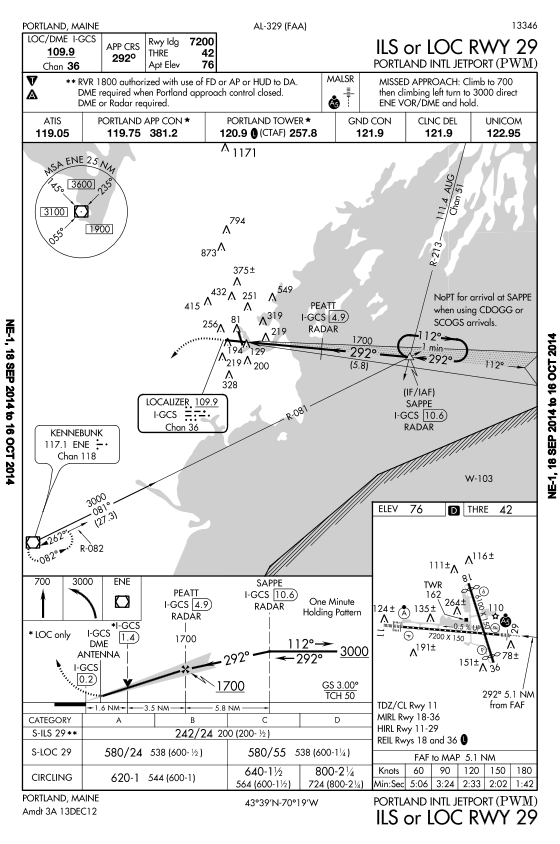If we see the runway, runway markings, runway lights, threshold, threshold markings, threshold lights, touchdown zone, touchdown zone markings, touchdown zone lights, REILS, or the VASI or PAPI, we can continue below DA and land. If we see the any part of the approach lights, we may continue the approach down to 100 feet above the touchdown zone elevation. Finally, if we see the approach lights and can also identify the red terminating bars or red side row bars, we can continue the approach and land. Often times these things will all appear at about the same time. If we get to the DA and don't see any of these items, it's time to execute a missed approach.
One legal technicality about this particular approach, which is barely worth mentioning, presents itself here. Say we do see just part of the approach lighting system. We're allowed to continue the approach down to 100 feet above touchdown zone elevation, right? We have just one problem, though. What is the TDZE for runway 29?
Well, in an attempt to conform to ICAO standards, the FAA decided to convert from using the touchdown zone elevation to using threshold elevation. As a result, this approach lists threshold elevation where TDZE would traditionally be given. As a consequence, we have no idea what the TDZE is, because the chart doesn't tell us. It is likely the same as the THRE, but we just don't know. So, the only legal action we are left with upon reaching DA and seeing part of the approach lights is to go missed approach. The government will resolve this issue in the future by either changing the regulation or going back to using TDZE. In the meantime, this technical issue will go on.
Lastly, let's go through the approach from the beginning again. This time we will say Portland approach is closed and air traffic control center is unable to provide radar vectors to SAPPE. Instead, they clear us from over ENE to SAPPE. A few minutes after passing ENE, we are given the following clearance: "Cessna seven zero eight golf lima, cross SAPPE intersection at or above 3,000, cleared ILS runway 29 approach at Portland. Radar services terminated. Change to advisory frequency approved."
In this situation, we can use the depicted holding pattern to make a course reversal and align ourselves with the localizer. As instructed, we would first cross SAPPE at 3,000 feet, before conducting a holding pattern entry to the depicted hold. In this case, a teardrop entry is most appropriate. So, we would turn to an 80 heading for one minute after passing SAPPE. After that one minute, make a right turn to intercept the localizer inbound.
Once you have joined the localizer and pass SAPPE, conduct the ILS approach. Air traffic control does not expect you to fly around in the holding pattern. If you need more time to become better established on the localizer or lose excess altitude, however, you may conduct additional circuits in the holding pattern with air traffic control approval. Maximum holding pattern speeds do apply to holding patterns that are part of an instrument approach.
